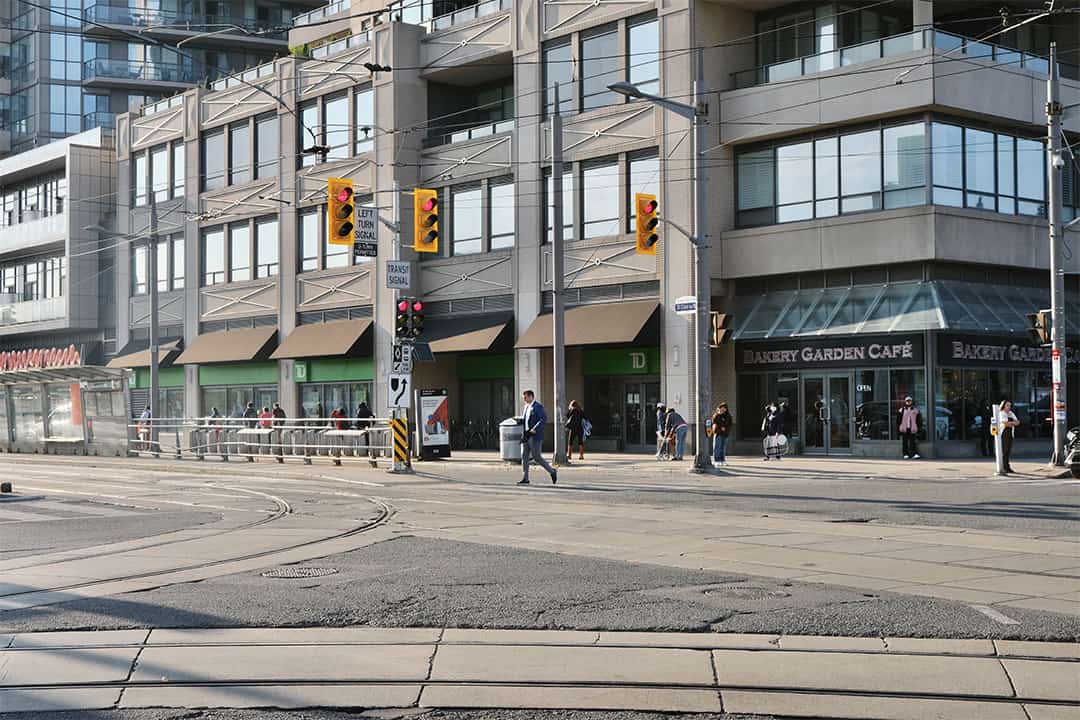Recent data on heat waves paints a concerning picture, with Toronto expected to experience close to 30 days of heat at 30 degrees Celsius or higher in the next decade and around 60 degrees Celsius by the year 2100. For reference, Toronto typically saw only around 10 to 12 days of extreme heat per year.
This meteorological problem is more than a seasonal inconvenience; it directly impacts U of T students.
The heat island dilemma
As I returned to class for the fall semester on a September afternoon, the weak breeze was not enough to keep me cool from the beating sun. Towering buildings loomed overhead, while sun-baked asphalt and concrete surfaces amalgamated into a cauldron of heat — and I was at its centre.
Downtown Toronto, like many urban areas, is particularly prone to the heat island effect. The heat island effect — whose effects are sometimes referred to as urban heat islands — is defined by the Climate Atlas of Canada as “an effect [that] happens because the closely packed buildings and paved surfaces that make up our cities amplify and trap heat far more effectively than natural ecosystems and rural areas, which are often shaded by trees and vegetation and cooled by evaporating moisture.” Additionally, it is also important to note that urban areas also generate excess heat from devices such as furnaces and vehicles.
In fact, Health Canada explains that overnight temperatures in the downtown core with one million people or more can surge up to 12 degrees Celsius higher than in the surrounding suburbs, predominantly due to the abundance of heat-absorbing surfaces. As for how the heat island effect directly impacts our health, a 2016 study claims that heat-related ambulance calls from areas with less than five per cent of tree cover blocking direct sunlight had about 15 times more calls than areas with greater than 70 per cent tree cover. This oppressive environment in downtown doesn’t just lead to discomfort; it poses a genuine health risk to students and residents alike.
Toronto’s Greenhouse Gas Emissions Report from 2019 breaks down where the faults lie in our infrastructure: nine per cent of emissions come from waste, 33 per cent from overall transit, and a staggering 58 per cent from building sector emissions. The data cannot get any clearer. We know the issues with building environmentally unfriendly architecture; what we now need is to take action.
Impact on students
For students whose academic and personal lives exist in the city, this isn’t just a matter of discomfort — it’s a genuine threat to health and productivity. Research has established a correlation between heightened temperatures and reduced cognitive function, slower reaction times, and impaired decision-making abilities.
Further, not all student housing or classroom settings at U of T are equipped with air conditioning. A stifling campus environment undermines the essence of academia and hinders learning and achievement. A 2017 study examined New York City’s highschool exams and found that students scored significantly lower on a standardized test on a 32.2 degrees Celsius day than on a 21 degrees Celsius day. More concerningly, the author found these negative effects to be long-lasting: exam-time heat exposure was strongly correlated with a lower likelihood of on-time high school graduation.
Given that the purpose of the academic institution is to foster an environment where students thrive on cognitive and physical processes, it is imperative that we address this heat issue — not only from a university or global perspective but from the municipality level as well.
The solution
Toronto, it’s high time we put on our thinking caps — preferably ones equipped with cooling technology. Before I discuss the future I see for our city, I’d like to hold Toronto’s city council responsible for its role in this issue. In November 2021, City Council assured the public that its set target of a 40 per cent tree canopy cover by 2050 was in the works. Unfortunately, The Toronto Star found that despite tens of millions in spending money, tree canopy coverage only increased by a disappointing 0.4 per cent throughout 2008 and 2018.
To the city’s credit, growing trees is not as easy as it seems. We can’t control the sun or the factors disrupting the city’s vegetation, but we can certainly mitigate the impact. A good start is to implement green infrastructure initiatives, such as green roofs, vertical gardens, and tree-lined streets, which can help alleviate the urban heat island effect while simultaneously enhancing air quality and visual appeal.
However, I suggest that we go a step further. Retrofitting existing homes and other urban spaces to reduce energy consumption would be a great start, but preventative measures like cooling elements, such as window placement, also goes a long way to reducing air conditioning consumption. Blue infrastructure, such as reservoirs and ponds, add aesthetic, cooling, and biodiversity to environments that are otherwise plain.
Furthermore, research indicates that green spaces positively affect mental health and well-being. Access to parks and greenery fosters relaxation, reduces stress, and promotes a sense of community: all of which are vital components of a healthy and thriving student life.
Of course, this is not only a Toronto issue. Climate change is threatening the entire world at an alarming rate, but we must first look at the way we take care of our own city to contribute to solving the problem globally.
Toronto’s battle against the heat island effect is a fight worth undertaking. For the sake of U of T students, our city, and our planet, we need to invest in innovative and creative solutions. We can turn the tide on rising temperatures and create a more habitable, vibrant campus. Let’s cool down, Toronto, and build a city that not only beats the heat but also inspires other cities with the idea that sustainability is a journey worth taking.
Emily Carlucci is a third-year student at Trinity College studying political science and English. She is The Varsity’s Traffic Tango columnist.



No comments to display.